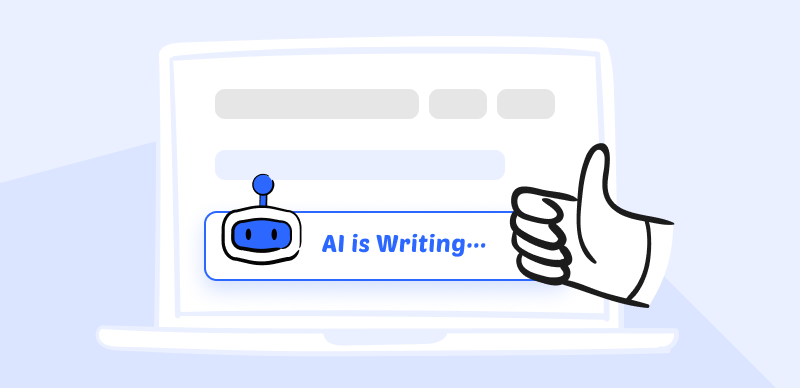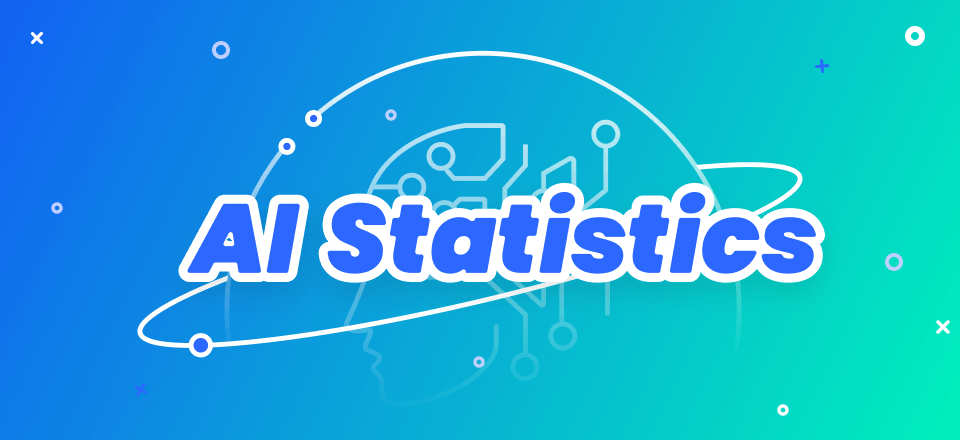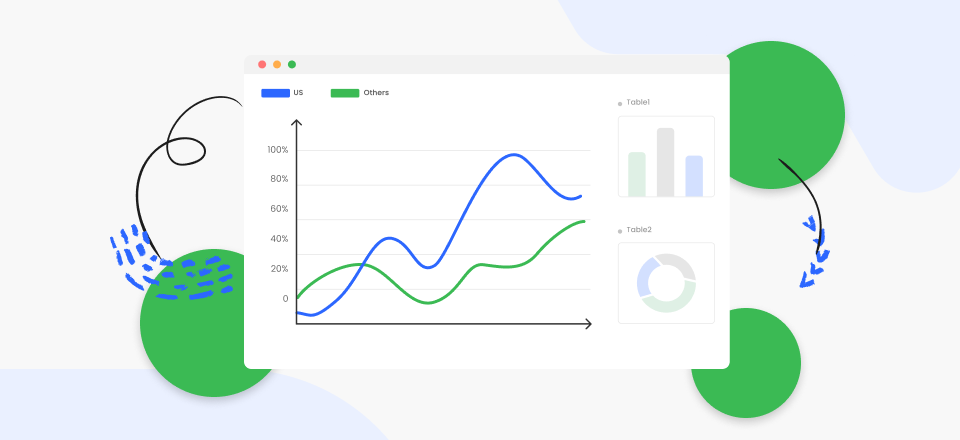AI (Automatic Intelligence) and ML (Machine learning) are two big terms in the technology industry, and they are usually used interchangeably. Although both concepts have distinct meanings, most folks, especially non-techies, usually confuse them for one another, causing more and more controversies.
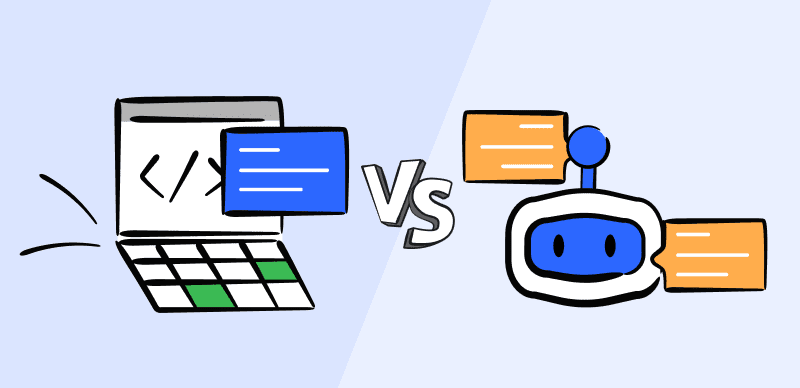
AI Vs ML
If you’re looking to explore AI and ML, you must understand their applications and limitations. So, to help you out, we’ve prepared this AI vs. Machine learning article to discuss all you need to know about both technology terms. Keep reading!
What Is AI and Machine Learning?
AI, also known as Artificial Intelligence is a branch of computer science that involves innovating machines that can execute tasks requiring human intelligence. These machines are programmed to think like humans and mimic their actions in a way that they have the best chance of accomplishing a certain objective, such as speech recognition, decision-making, language translation, visual perception, etc.
However, Machine Learning, on the other hand, is a subset of AI that involves the development of computer systems that can automatically learn and adapt to new data without following instructions or requiring human assistance. The system uses algorithms and statistical models to make predictions and decisions on fresh data and can be used in different applications, including predictive analysis, national language processing, image recognition, etc.
The Differences Between Machine Learning and AI
There are lots of differences between Machine Learning (ML) and Artificial Intelligence (AI). From their types to how they’re applied and their limitations, we’ve explained the main difference between AI and ML that you should know.
| Machine Learning (ML) | Artificial Intelligence (AI) | |
| Definition | It’s a subset of AI that involve training algorithms to understand the pattern in data and improve over time without requiring human instructions. | This is the innovation of machines programmed to execute tasks that normally require human intelligence.
|
| Approach | It focuses on using statistical algorithms that allow machines to learn from data and make predictions over time. | It focuses on the development of intelligent systems that can learn and understand the environment, make decisions, and solve problems.
|
| Types |
|
|
| Applications |
|
|
| Example | Image recognition, Chatbot, Self-driving car, Virtual assistant. | Maps & Navigation, Facial detection and recognition, Text editors and autocorrect, Chatbots, and digital assistance.
|
| Limitations |
|
|
| Dependency | It’s a subset of AI. So, it largely depends on it as it requires a large amount of data to train algorithms.
|
It does not depend on ML |
Why Is AI Better than Machine Learning?
Basically, both AI and Machine Learning play a vital role in solving various problems in the tech industry. However, AI covers a wider range of approaches and techniques, including Machine Learning.
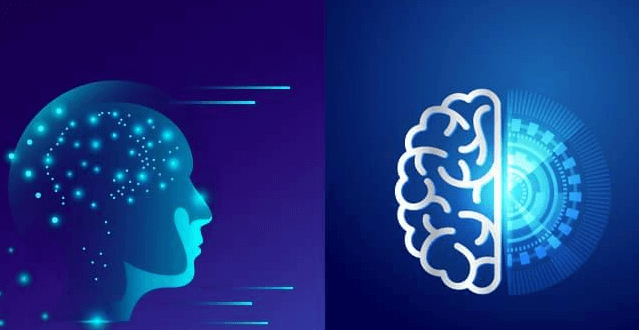
Why Is AI Better than Machine Learning
According to the AI trends in 2023, we summarize the top reasons why many tech experts think AI is better than Machine Learning:
- It Handles Complex Data Better: Since AI can do more than just recognizing data, it tends to be a better option for handling complex data that requires more reasoning, decision-making, and problem-solving capabilities.
- It has faster and easy adaption to new situations: Unlike Machine Learning which requires a huge amount of training data for viable results, AI can learn from new experiences and adapt to new situations faster.
- Broad Range of Applications: Although both AI and ML are closely related and have a wide range of applications, AI covers more technologies, including Machine Learning, making it have a broader range of applications in various industries, such as art design and novel writing.
- Revolutionization of Industries: AI can come in handy in various industries to enhance workflow and automate certain processes.
- Easy Interaction With Humans in a More Natural Manner: Unlike ML, AI is designed to read and understand natural language, thus enabling it to communicate with humans more naturally and intuitively.
Faqs About AI and Machine Learning
In this part, we collect several questions about AI and Machine Learning.
Differences Between Deep Learning and Machine Learning
Deep learning is a subset of Machine learning while Machine learning is a subset of Artificial intelligence. However, here are the key differences you should know about both of them.
| Machine Learning | Deep Learning |
|
|
The 3 Advantages of AI
Below are the three main advantages of AI that you should know:
1. It facilitates the easy execution of complex tasks without any error
One of the primary advantages of artificial intelligence (AI) is its ability to execute complex tasks with precision and accuracy. This is because AI Systems are programmed to make decisions based on a large amount of analyzed large data, and if programmed perfectly can perform different operations without errors.
For example, in a manufacturing setting, AI-powered robots can be used to assemble complex products quickly and accurately, without making errors. This can result in significant cost savings and increased efficiency, as well as improved product quality and customer satisfaction.
2. Reduction in Human Error
It’’s undeniable that humans are prone to making mistakes that can have serious consequences, particularly in high-risk industries such as healthcare and aviation. But with AI, you can easily automate repetitive or mundane tasks, reducing the risk of human error and enhancing overall accuracy.
3. It makes the decision-making process faster and easier
Also, AI makes the decision-making process faster. As mentioned earlier, AI is designed to analyze large amounts of data in real time, identify patterns and trends, and provide insights that humans may miss. This can be particularly useful in various industries, including finance, where it can be used to analyze market trends and make investment decisions.
The 4 Types of AI
The 4 types of AI include the following:
- Reactive Machine: Reactive machines are the simplest form of AI, which can only respond to situations based on the data they receive. Such AI does not have the ability to learn from past experience. They operate solely on the basis of the current situation and are typically used in applications such as robotics, where they can perform specific tasks in response to environmental stimuli.
- Theory of Mind: Theory of mind, unlike Reactive Machine, is an advanced form of artificial intelligence. It enables machines to understand and predict the behavior of other agents. Plus, it can simulate the mental states of other entities and predict how they will behave in different situations. This is useful in applications such as autonomous driving, where the vehicle needs to anticipate the behavior of other drivers on the road.
- Self-awareness: This is another type of AI, whereby the machines have knowledge of their own existence. Such machines have the ability to understand their capabilities and limitations, allowing them to have the same level of consciousness as humans. Self-awareness AI is still largely in the realm of science fiction, but it is an area of active research and development.
- Limited Memory: Limited memory AI refers to machines that have the ability to store and recall past experiences. This type of AI is used in applications such as speech recognition, where the system learns from past interactions to improve its accuracy over time. Limited memory AI is also used in machine learning applications, where the system uses past data to identify patterns and make predictions about future events.
The Benefits of Using AI for Learning
AI now plays a vital role in the education industry, and here are some of the benefits it brings to the table:
- Determining classroom vulnerabilities
One of the benefits of using AI for learning is its ability to analyze data and identify areas where students may be struggling. AI algorithms can analyze student performance data and identify patterns and trends that may indicate areas of weakness. And it can also help teachers to identify individual or group-level learning needs and adjust their teaching strategies accordingly, leading to more targeted and effective instruction.
- Facilitates personalized learning
Another advantage of using AI for learning is its ability to personalize instruction for each student. By analyzing student data, AI algorithms can identify each student’s strengths and weaknesses and provide targeted feedback and resources. This is very helpful for students to learn at their own pace and in a style that works perfectly for them.
- Task automation
AI can also be used to automate routine administrative tasks, such as grading, record-keeping, and scheduling. This saves teachers’ time, allowing them to focus on more important tasks such as lesson planning and individualized instruction. Automated grading can also provide students with immediate feedback on their performance, which can help them to improve more quickly.
- Creates excellent content for learning
Teachers can also employ AI in creating high-quality learning materials. It allows them to analyze large amounts of data, such as textbooks and academic papers, and identify key concepts and themes. This can help teachers to identify the most important information to include in their lessons, leading to more effective and engaging instruction.
Final Thought
The article above provides a comprehensive overview of Artificial Intelligence (AI) and Machine Learning (ML), covering their definitions, differences, and applications. Although AI is a broader range of benefits compared to ML, both technology has evolved over the years and now play a vital role in today’s world. Besides, they are being used in various fields such as healthcare, finance, transportation, and lots more.
Hopefully, the article serves as a helpful guide for you to understand the basics of AI and ML and their impact on our society.

